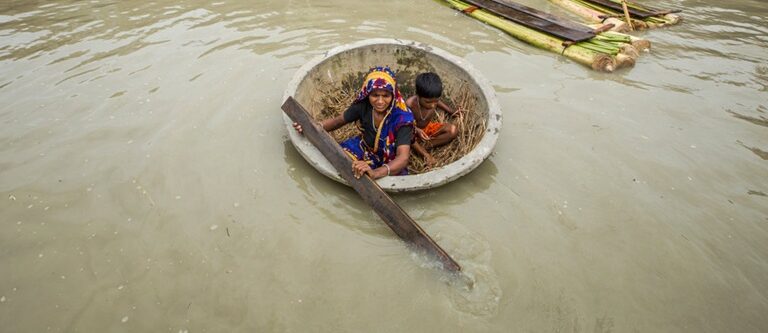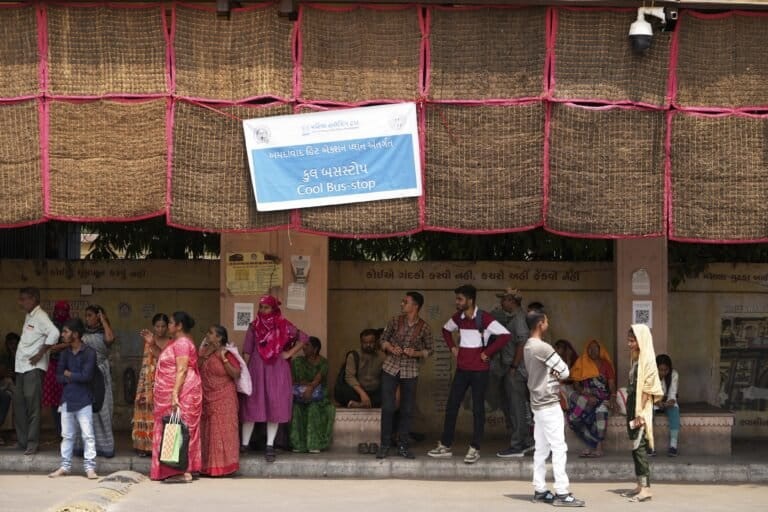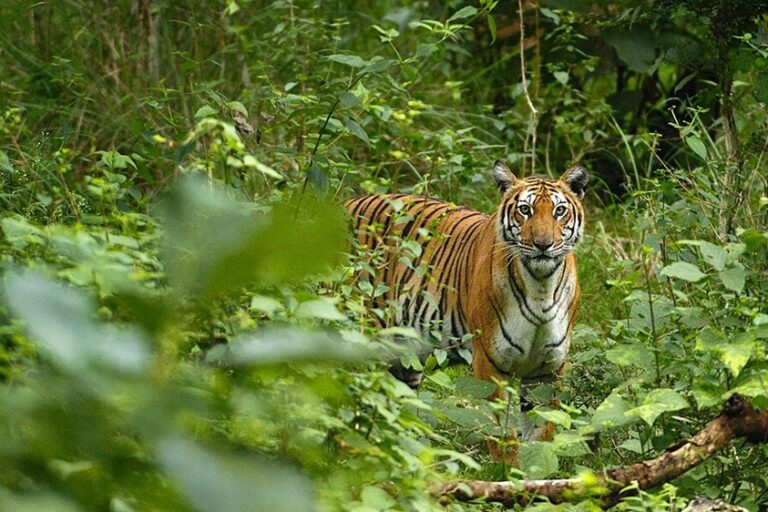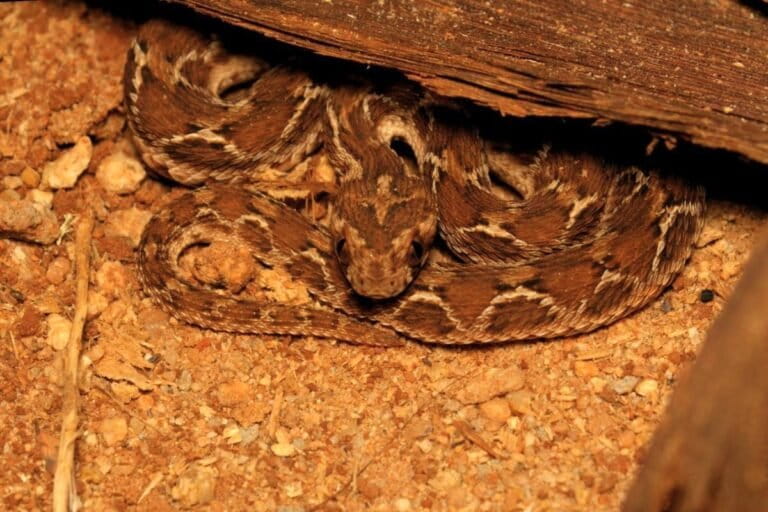- Two community-led organisations from Arunachal Pradesh and Nagaland bagged the 2018 India Biodiversity Awards in recognition for conservation of wild species.
- In 2012, the government of India, in partnership with UNDP India, initiated the India Biodiversity Awards to recognise and honour outstanding models of biodiversity conservation, sustainable use and governance at the grassroots level.
- The work by the award winners Singchung Bugun Village Community Reserve Management Committee (Arunachal Pradesh) and Lemsachenlok Organization (Nagaland) shows that partnership between the forest department and members of indigenous communities is key to conservation.
Community-led conservation initiatives from northeast India were in the spotlight at this year’s India Biodiversity Awards. Community reserves managed by Singchung Bugun Village Community Reserve Management Committee in Arunachal Pradesh and Lemsachenlok Organization in Nagaland were recognised for their work in conservation of wild species.
Initiated in 2012 by the Government of India, in partnership with UNDP India, the India Biodiversity Awards recognise and honour outstanding models of biodiversity conservation, sustainable use and governance at the grassroots level in India.

The Ministry of Environment, Forests and Climate Change (MoEFCC) defines conservation reserves and community reserves as “protected areas of India which typically act as buffer zones to or connectors and migration corridors between established national parks, wildlife sanctuaries and reserved and protected forests of India.”
These protected area categories were first introduced in the Wildlife (Protection) Amendment Act of 2002 − the amendment to the Wildlife Protection Act of 1972.
Such areas are designated as conservation areas if they are uninhabited and completely owned by the government of India but used for subsistence by communities and community areas if part of the lands are privately owned.
Using traditional knowledge to protect the Bugun Liocichla in Arunachal Pradesh
It remained unknown to the world till 2006, despite its distinct fluty call.
The diminutive Bugun Liocichla bird, numbering around 20 and named in honour of the Bugun tribe in Arunachal Pradesh, spurred members of the indigenous community to make a giant stride in conservation efforts.
The community voluntarily partnered with the Arunachal Pradesh Forest Department to conserve the bird that is found nowhere else in the world and its habitat, a step that eventually culminated in the creation of a 17 square km community reserve in 2016.
Discovered in the year 2006 by Ramana Athreya, an astronomer and ecologist, in the forests fringing Eaglenest Wildlife Sanctuary in the West Kameng district, the bird was named in honour of the indigenous Bugun tribe that has ownership over the forests.
Measuring just eight inches in length, with a striking olive-grey plumage, the critically endangered Bugun Liocichlas, are found nowhere else in the world.

“The forest patch where it was discovered was under the control of the Bugun tribe of the Singchung village. This forest patch was right outside the Eaglenest Sanctuary. Although the community protected the forest, it did not have legal protection,” Millo Tasser, divisional forest officer, Shergaon Forest Division, told Mongabay-India.
The realisation that the community-controlled forest was home to many endemic and threatened species such as the red panda (threatened), golden cat and marbled cat, helped shape the idea of declaring the area as a community reserve and providing protection to all the other species in the site that had became famous because of the Liocichla.
“The idea was to declare it as a community reserve and accord legal protection (as parks and wildlife sanctuaries) while simultaneously encouraging ecotourism and improving local livelihoods so the community could take additional steps for conservation. The central government also funds the community reserve,” said Tasser who spearheaded the campaign.

About three years before the community reserve was declared, the process of ecological monitoring and data collection began with the help of biologists Nandini Velho and Umesh Srinivasan. In 2013, the first meeting on the community reserve was held. This was followed by a survey of the area for boundary rationalisation in 2016.
“The scientists were instrumental in ecological monitoring and data collection and we managed to convince the Bugun members of Singchung village to set aside 17 square km of their forests as a community reserve,” Tasser recalled.
The Singchung Bugun Village Community Reserve (SBVCR) was officially declared in 2017.
“Since it is located outside the Eaglenest Wildlife Sanctuary, the reserve offers double protection, as a cushion to the sanctuary. The Singchung Bugun Village Community Reserve Management Committee has members from the indigenous community as well as from the forest department,” Tasser said.
The Committee was honoured with the IBA 2018 for using its “traditional knowledge to protect the bird and its habitat” threatened by activities like timber extraction, forest clearance and infrastructure development.
As the reserve took flight, so did activities surrounding training and capacity development. The year 2017 saw recruitment and training of staff in patrolling, snake handling and birds.
“The youth of our tribe is part of the joint patrol team and we regularly comb the forests. The Liocichla has become the archetype of saving other endangered species in the site. One of the main challenges is to ward off outsiders who try to hunt down the animals and birds,” Indi Glow, a member of the committee, told Mongabay-India, adding that there are plans to expand the reserve boundaries to bolster conservation.
“There are about 1700 to 1800 Bugun tribe members in 24 villages in the area. In Singchung village we have given up hunting and animal sacrifice rituals since 2007,” said Indi Glow.
The community reserve also safeguards forest catchment areas. “The Lama Camp area inside the community reserve is a catchment area. Forests regulate water flow and if we protect forests, we ensure there is no water scarcity in the villages down the hill. Due to the community reserve, we are able to protect a lot of medicinal plants. We are also going for organic farming,” he added with pride.
Keeping up the momentum, researcher Nandini Velho and team are in the process of finalising the management plan. She said SBVCR is truly indicative of how different people have come together to do something that nobody ever thought would be possible — “From a bird being named after a tribe, to the progressive Bugun community coming together to formalise their boundaries, to the leadership shown by the forest department, to researchers working closely with the department and community to collect data, co-write management plans and get international and national support,” Velho noted.
The committee makes sure that young people are involved in awareness generation, joint patrolling, rescue, rehabilitation and promotion of ecotourism. Singchung is a great example of marrying the traditional and the modern to conserve and protect wild species.

According to Tasser, the key takeaway from the experience is that community participation must be encouraged for conservation.
“In Arunachal, most of the forests are owned by indigenous communities and they have the right over the forests. To ensure adequate conservation there needs to be a collaboration between forest department and the communities,” Tasser added.
Ceasing hunting to revive wild species in Longleng, Nagaland
The populations of wild species such as hornbills and barking deer, which were previously hunted down, have made a dramatic resurgence in the last decade in a community conserved area in the hills of northern Nagaland.
The Yaongyimchen Community Biodiversity Conservation Area (YCBCA) in Longleng district of Nagaland is now a safe haven for 85 species of birds, including Amur falcons, 15 species of frogs, as well as leopards, barking deers, serows and otters.
This comeback is credited to 350 households of the Phom tribe who have transformed around 10 square km of a community-owned forest into a refuge for wildlife.
Maintained by a committee under the aegis of Lemsachenlok organisation, hunting of wildlife is no longer practised in the designated area, informed Y. Nuklu Phom, team member of the award-winning organisation.
“In the entire community-conserved area under our jurisdiction, no hunting is allowed, not even the traditional traps. That is one of the main successes of the conservation initiative,” Y. Nuklu Phom told Mongabay-India.

The UNDP notes that “local communities have stopped using guns and catapults and the organisation has imposed a ban on logging, hunting, fishing and trapping.”
Observations, such as extinction of wildlife species, deforestation and loss of crop productivity, led to the crystallisation of the idea of a community-conserved area.
“We looked at the rampant deforestation, changing climate, extinction of wild species and most importantly the decrease in quantum of production of the crop, the decrease in water level in the rivers and streams and disease outbreaks,” Phom said, noting the various reasons that gave the creation of a community conserved area a push.
After about four years of discussions and meetings with village councils, Yaongyimchen inhabitants began conserving the YCBCA in 2010.
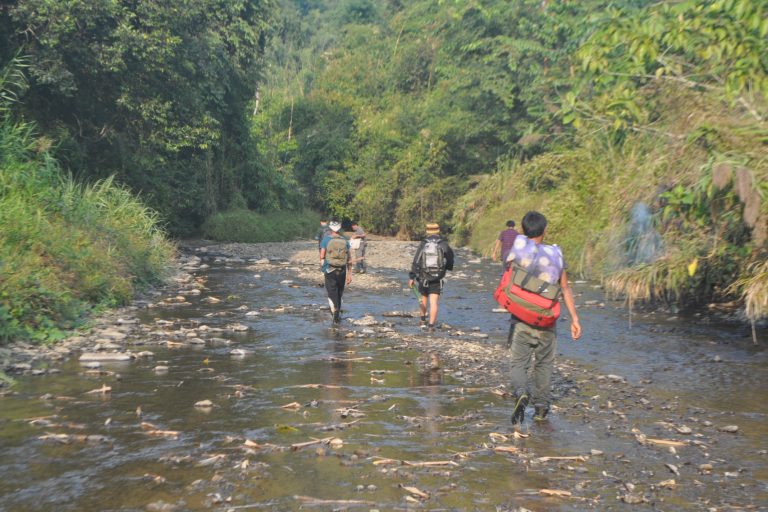
“Having set aside a huge area of forest for biodiversity conservation, Amur falcons started roosting in the area and we have been witnessing the largest congregation during the last four years. We have witnessed more than a million of the migratory raptors besides the roosting in the adjacent areas,” Phom said.
One of the most successful activities of the campaign is satellite tagging of the birds.
A big challenge however, is a dearth of alternative livelihood options for the community. “Almost for ten years the community has been working very hard to conserve the ecosystem but so far we have not received assistance for alternative livelihood. Slowly, the government is taking over but we have not received such assistance so far,” Phom said.

Jhum or shifting cultivation is the only means of livelihood for the community, he said.
“About 20 to 30 years back these areas were used as a Jhum fields. Earlier the Jhum cycle would be about 15 years but now the cycle has reduced to seven-eight years because the areas are now transformed for biodiversity conservation. So, how do we issue alternative livelihood options without the government coming forward?” Phom added.






